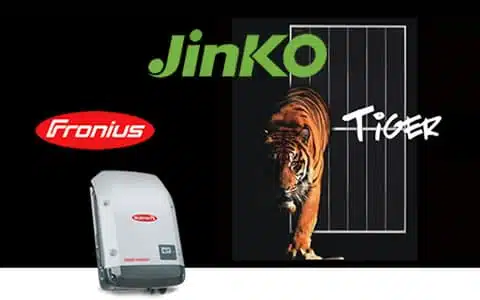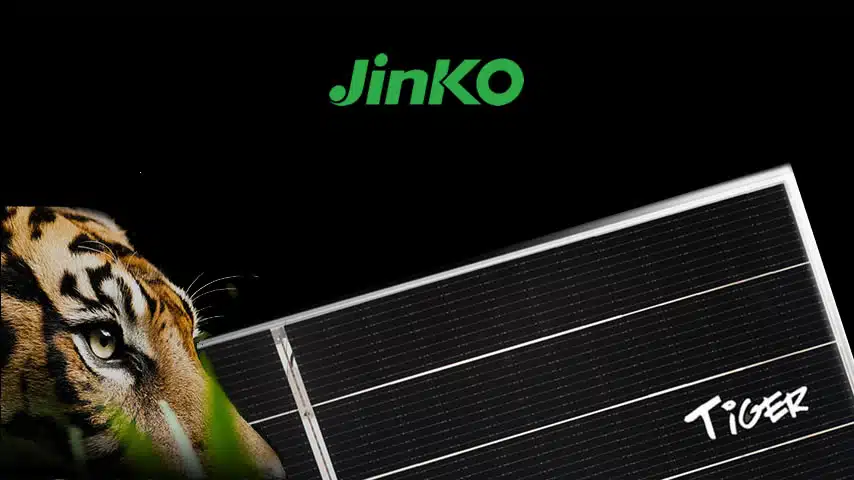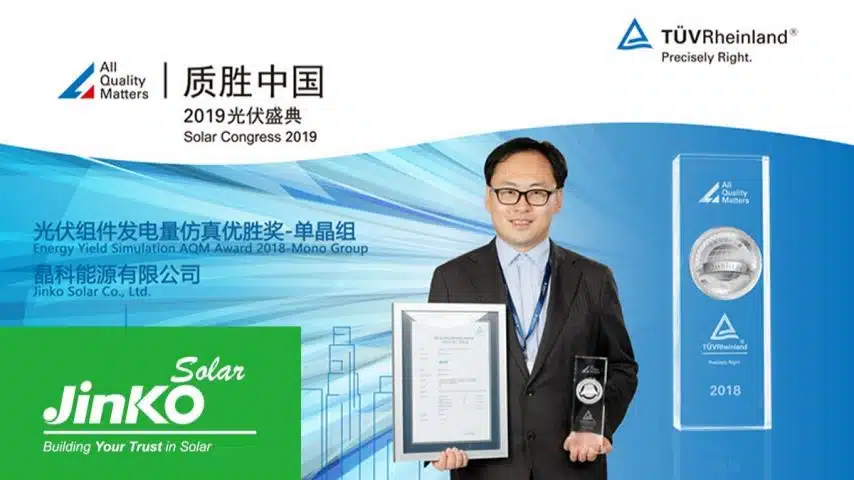Why should you consider Jinko Solar panels?
If you're looking for high-quality solar panels in Australia, Jinko Solar is a popular brand to consider. Their Tiger Pro 370w, 390w, and 440w panels are known for their efficiency and durability. In this Jinko solar panels review, we'll take a closer look at Jinko solar panels and review their features and prices in Australia. Jinko Solar reached the point where it is one of the World's main PV suppliers and a true giant in the PV industry. If you need to find Jinko in Australia they are in Sydney but have a branch in all states too.
Table of contents
- Why should you consider Jinko Solar panels?
- Jinko Solar Expands N Type Range On Australian Market
- Jinko Solar Tiger Pro Neo
- What is Jinko TOPcon technology?
- Jinko Tiger Pro 440w review and datasheet
- Jinko Tiger N Type 365w 370w 390w Review
- Jinko 370W Tiger LM - JKM370m 60hlm
- Review Jinko JKM370M-66H 370w Solar Panel
- Jinko Cheetah 370W 330w Review
- Top Build Quality With Jinko Solar Panels.
- Jinko Solar Review - So How Did Jinko Start and where from here?
- Jinko australia - Warranty and Service - Indeed A BIG Jinko Plus!
Jinko Solar Expands N Type Range On Australian Market
Australian solar customers are to be treated to an expanded range of N Type panels from popular manufacturer, JinkoSolar.
The company has been offering the N Type here since 2019 and with great success. The first batch of Tiger Neo 470-watt panels recently arrived featuring a 60-cell layout based on TOPcon technology, with a 163mm or 182mm cell format.
Those familiar with the solar industry will know how good the N Type product has been, and that this is big news. At this time, the N Type is arguably the way ahead for solar in the immediate future for solar in Australia. This is because of the easily identifiable benefits that the N Type panel offers customers over P Type contenders and sharp pricing.
It ‘ticks many boxes”, such as much less or even zero panel degradation in areas such as LID, leTID, much longer 20-year warranties and recognised brand reliability, that makes the decision to purchase these panels a lot easier for end-users. The N Type also has next level Tedlar backsheeting and the latest MC4-EV02 connectors to cap off a very well-rounded solar panel product.
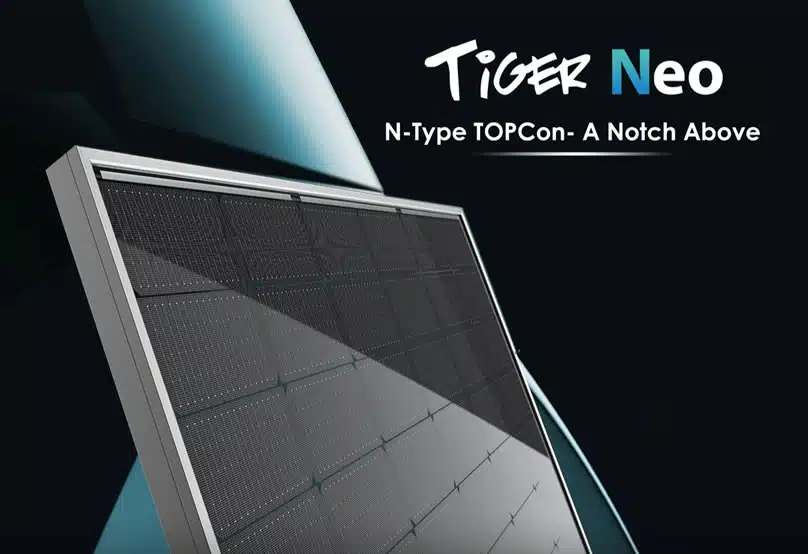
Jinko Solar Tiger Pro Neo
The new Tiger Neo will bolster the N Type products that have been well received to date, and it’s expected that this momentum will continue to help JinkoSolar gain even more market share in the N Type group of solar panels. The firm has recently committed to expand production of N Type panels to a massive 45GW.
What about the size?
One aspect of the product is that the physical size of the latest 470W panel is under 2 metres long at 1903mm. Width is 1134mm which is a size that’s becoming more common. Panel height is down 5mm to 30mm. So, they are even thinner than most conventional panels too.
A 6.58kW system will consist of just 14 panels now. This reduced footprint will be very helpful on tight roofs. There will also be less mounting equipment required too, so this will certainly help keep prices down to end-users as well.
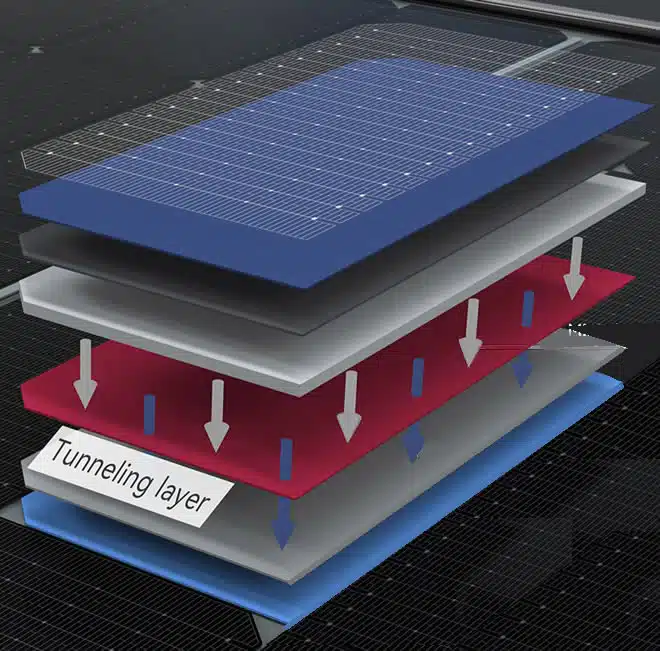
Jinko TOPcon technology
What is Jinko TOPcon technology?
The N Type panel excels at handling heat that pushes down efficiency, as the temperature rises. Heat is a solar killer. The average solar panel has a temperature co-efficient of around -0.35%/°C.
Yes, this figure has been steadily dropping over the last few years in the solar industry for panels generally. The lower, the better. However, the N Type cells have reduced that substantially to around -0.30%/°C.
The advent of TOPcon technology is another significant advance in solar efficiency. Tunnel Oxide Passivated CONtact (TOPCon), has enabled even further increases of efficiencies over PERC panels that have become the most popular panel type sold over the last few years. The ability to increase efficiencies through better connectivity and processing of sunlight entering the cell, has pushed output of TOPcon equipped panels even higher than regular PERC panels. JinkoSolar developed TOPcon and its “HOT 2.0” technique to deposit a special oxide layer that resembles a ‘tunnel’ on the cell.
Along with a micro-sized, light selective silicon film that re-directs and reflects light back into the cell to improve light-to-power conversion. It prevents ions that had been previously released within the cell from “recombining” with the base material. Right now, JinkoSolar can reach solar cell efficiencies of around 25.5%, but there is scope in the design to expand this up to nearly 29% in the future.

Tiger Pro
Jinko Tiger Pro 440w review and datasheet
P-type Mono-crystalline Panels
We now have the recently arrived Jinko Solar Tiger Pro 440w panel. This new series of panel has larger format cells and a unique multi-busbar design called “Tiling Ribbon” (TR) technology. The panel is arranged into 9 sectors that are connected by the new busbar design. It’s a kind of over-lapping design much like a tiled roof, hence the name “Tiling Ribbon”.
This allows much smaller gaps and distances between the solar cells, and increases the flow of power through the panel, increasing efficiency. Jinko created special tooling, to press the segments together. One of the other benefits of this new process is it lowers production costs too, by greatly reducing the amount of lead solder used in a panel.
Jinko 440w tiger pro Key Features
- Tiling Ribbon technology - increase the efficiency of the panels
- Half Cut Cell Technology - 120 cells instead of 60: increases efficiency
- Jinko 440w tiger pro MBB technology (instead of 5BB) helps increase performance by reducing the distance between the power bar and the finger grid line.
- 12 year product warranty with 25 year linear power warranty (0.55% Annual Degradation Over 25 years)
- Best mechanical support: snow load 5400 Pa, wind load 2400 Pa
Jinko 440w datasheet and more info
Jinko Tiger N Type 365w 370w 390w Review
Jinko Tiger TR N Type Mono panels
As mentioned elsewhere here in main description, The Jinko Solar N Type series of panels are making inroads into the Australian market. A model in the current range is the 365 watt panel, that shares all the features of the higher output models of the same series. We also have the 370 watt available, but the 365 N panel - is only 5 watts less, but has a lower price too! The difference in output wont be enough to significantly affect overall results. So, if you are able to get these at a discounted rate – we recommend you take them while you can!
Jinko 370W Tiger LM - JKM370m 60hlm
Mono PERC Solar panels
This series of panel shares the same 9 busbar solar cell design that the TR models have. Improving module efficiency and making for a better-looking product.
The JKM370m 60hlm Panels are compact and in the mid to high performance rang panels.
Review Jinko JKM370M-66H 370w Solar Panel
The JKM370M-66H 370 watt solar panel, is in fact one of our most popular panel. It has proven itself as a top quality, mid priced panel. There is no need then to spend mega bucks - just get Jinko! We've installed lots of these panels and in fact have never had any warranty or service calls. Tested by Choice and also the CSIRO, these panels come up trumps. Many other panels mostly can only rely on their glossy sales brochures - which are not always true.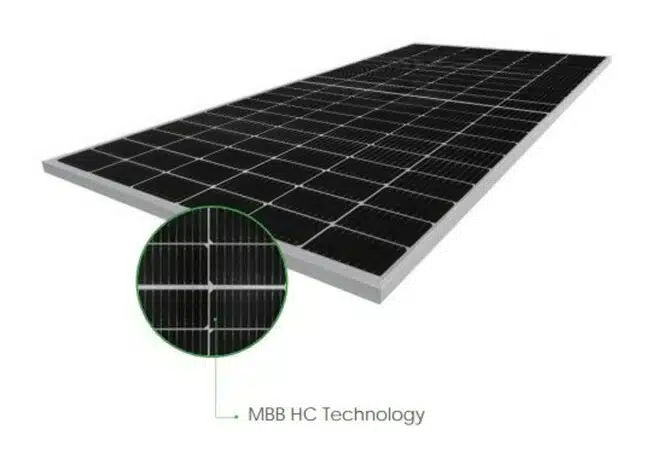
JKM370m 60hlm - Mono PERC
Jinko Cheetah 370W 330w Review

Top Build Quality With Jinko Solar Panels.
Up until now, we have never had any problems due to build quality with Jinko solar panels. Jinko is a good option to most of the expensive brands.
These panels are not the absolute best you can buy, but are many steps higher than others of their kind and they have a large following in Australia. These panels have a 35mm frame which also feels solid and has good rigidity. So if you are in the market for a solar system, you can check our Jinko 6.6kw solar panels deals
Jinko Solar Review - So How Did Jinko Start and where from here?
Founded in 2006, Jinko produces Solar panels now around the world including Portugal, Malaysia and South Africa too. They are in fact one of the world’s biggest solar panels makers. In this Jinko Solar Panels Review, we look at top market leader - the Jinko 370w JKM370M-66H. Jinko has been in the top 3 in Bloomberg’s Tier 1 report for some time. It has 16GW of solar deployed globally. Also, as at 2020, it is in first place in rooftop solar market share in Australia.
Jinko australia - Warranty and Service - Indeed A BIG Jinko Plus!
Jinko has a 12-year product warranty and also a 25-year performance guarantee and with offices in every state, you’re unlikely to go wrong with great support from Jinko Australia.
This is the worlds leading tier one brand in solar panels, having built a vertically integrated value chain for solar products. In Australia, Jinko holds the largest share of the rooftop solar market for Australian homes and businesses.
